Emerging feed drying equipment and drying methods
Posted by Animall Feed Blok Making Machine | updatetime 2020-07-24 15:09
Emerging feed drying equipment and drying method
1. Purpose and method of feed drying
The purpose of feed drying is to remove excess water in the feed ingredients to facilitate packing, transprotation, storage, processing and use. Drying is a complicated process. Different drying objects have different drying methods. Therefore, a reasonable drying method must be determined according to the fifferent composition and characteristics of the feed. There are many classification methods for dryers. According to the structure of the dryer, the commonly used dryers are: spray dryer, fluidized bed dryer, air dryer, rotary drum dryer, drum druer, infrared dryer, high frequency dryer, ect. These dryers have been widely used in the feed drying industry, greatly supporting the development of the feed industly, and their structure and working principles are well known to us. This article will introduce several emerging drying methods and dryers so that everyone can understand the development direction and prospects of dryers.
2. Xinxing drying
2.1 Flash dryer
Shown in Figure 1 is a schematic diagram of the spiral flash dryer, which is mainly composed of a feeder, a drying chamber, a cyclone separator and a bag collector. The material to be dried enters the drying chamber from the feeder, and the hot air enters the drying chamber along the tangential direction, and flows upwards from the bottom of the drying chamber at a high-speed rotation state, fully contacting the material, so that the material is in a stable and balanced fluidized state. The agitator in the drying chamber under the combined action of the impact of high-speed rotating airflow, the material blocks are dispersed into irregular particles. The large undried meterial moves to the wall of the chamber and falls to the lower part of the drying chamber due to its large settling speed. Repeat the above process. As the materials are dispersed and the materials collide with each other, the dried particles on the surface of the material block will move to the air rotation axis of the drying chamber, and be discharged to the material collector together with the airflow, so as to obtain uniform particle size and dryness. Dry the product. The outstanding advantages of this dryer are high drying efficiency, low energy consumption, uniform product drying, compact structure, and fusion of crushing and drying. Suitable for dry and viscous, paste, powder, filter cake-like materials. In the feed industry, it can be used to dry blood meal, meat and bone meal, fish meal. protein paste, dregs, etc.
2.2 Spiral vibration dryer
The machine is composed of inner and outer cylinders, ring-shaped orifice plate, vibration source, etc. The two vibration motors are arraned crosswise. when the motors ratate, they will generate vertical excitation force and excitation moments around the vertical axid, so that the dryer body will vibrate linearly in the vertical direction and torsional vibration around the vibral centerline. The combination of the two vibrations makes the material move continuously from top to bottom along the horizontal annular orifice. The drying medium is blown into the drying cylinder by a blower through the air inlet, and passes through each layer of orifice plates from bottom to top, and passes through the material layer. Due to the continuous throwing and turning of the materials, it can not only prevent the materials from sticking to the surface of the surface spiral groove, but also greatly increase the contact area between the materials and the drying medium, thereby strengthening the heat and mass transfer process between the materials and the drying medium. The advantages of spiral vibratio dryer are energy saving, wide range of applicable materials, good quality of dried products and high production efficiency. It is suitable for dryin gall kinds od granular, powder, block and flake meterials. In the feed industry, the dryer can be used to dry fish and shrimp bait, various additives, distiller's grains, starch residue, vegetable protein, etc.
2.3 Rotary vane dry
Figure 3 shows the working schematic diagram of the rotary vane dryer, which is a downstream dryer. The material is put into the rotary drum through the feeding device, and the material is lifted to the top by the lifting plate installed in the drum. When the material falls, the material is broken by the high-speed rotating blades in the drum, and it reciprocates until it moves to the outlet. At the same time, the hot air generated by the aombustion furnace enters the cylinder to filly contact the material, so that the material is dried quickly, and then discharged through the conveyor at the discharge end. Because the dryer has built-in crushing blades, the materials entering the dryer can be immediately broken up, especially the materials with a certain viscosity are broken into small pieces from large clumps, and contact with hot air to bring out a part of the moisture, so that full contact with hot air speeds up the drying speed. The characteristics of the dryer are large heat transfer coefficient, high thermal efficiency, small product oxidation deterioration, and large processing capacity. It is suitable for drying all kinds of granular, small block and flake high-humidity material. In the feed industry, this machine can be used to dry chicken, cow and pig manure, pasture, dregs, etc.
3. Emerging drying methods
3.1 Vacuum freeze drying
We know that the three states of water, soild, liquid, and gas, are determined by pressure and temperature. When the pressure drops to 610Pa and the temperature is 0.0098℃, the three states of water can coexist. This state point is the three-phase equilobrium point. When the pressure is lower than 610Pa, no matter how the temperature changes, the liquid state of water cannot exist. If the ice is heated at this time, the ice can only sublimate into gaseous state drectly beyond the liquid state. Similarly, if you keep the temperature constant and reduce the pressure, you will get the same result. Vacuum freeze-drying is based on the nature of water, using refrigeration equipment to freeze the materials into a solid state, and then vacuumize the solid ice to driectly sublime into gaseous water vapor, so as to achieve the purchase of drying. Freeze-drying has many advantages.
3.2 Superheated steam drying
Superheated steam drying drying technology is an emerging-saving drying method. It is a drying method that uses superheated steam to directly contact wet materials to remove moisture. Compared with traditional hot air drying, superheated steam drying uses water vapor as the drying medium, and all the exhaust gas discharged by the dryer is water vapor, so there is only one gaseous commonent in the drying process, so the mass transfer resistance is very small. At the same time, the temperature of the exhausted gas is kept above 100°C, so that recovery is relatively easy, and the reused by methods such as condensation and compression, so the thermal efficiency is high. In addition, since the heat capacity of water vapor is twice that of air, the consumption of drying medium is significantly reduced, so the unit energy consumption is low. Overheating drying technology has many advantages: large heat transfer coefficient, low mass transfer resistance, low steam consumption, no danger of explosion and fire, good for environmental protection, sterilization and so on. However, superheated steam drying also has a certain application range. For heat-sensitive materials, this drying method is not suitable. If the recovery is unfavorable, the energy-saving effect will be greatly affected, and the cost is relatively high. In the feed industry, superheated steam drying technology can be applied to distillers grains, pasture, fish bones and fish meat.
The purpose of feed drying is to remove excess water in the feed ingredients to facilitate packing, transprotation, storage, processing and use. Drying is a complicated process. Different drying objects have different drying methods. Therefore, a reasonable drying method must be determined according to the fifferent composition and characteristics of the feed. There are many classification methods for dryers. According to the structure of the dryer, the commonly used dryers are: spray dryer, fluidized bed dryer, air dryer, rotary drum dryer, drum druer, infrared dryer, high frequency dryer, ect. These dryers have been widely used in the feed drying industry, greatly supporting the development of the feed industly, and their structure and working principles are well known to us. This article will introduce several emerging drying methods and dryers so that everyone can understand the development direction and prospects of dryers.
2. Xinxing drying
2.1 Flash dryer
Shown in Figure 1 is a schematic diagram of the spiral flash dryer, which is mainly composed of a feeder, a drying chamber, a cyclone separator and a bag collector. The material to be dried enters the drying chamber from the feeder, and the hot air enters the drying chamber along the tangential direction, and flows upwards from the bottom of the drying chamber at a high-speed rotation state, fully contacting the material, so that the material is in a stable and balanced fluidized state. The agitator in the drying chamber under the combined action of the impact of high-speed rotating airflow, the material blocks are dispersed into irregular particles. The large undried meterial moves to the wall of the chamber and falls to the lower part of the drying chamber due to its large settling speed. Repeat the above process. As the materials are dispersed and the materials collide with each other, the dried particles on the surface of the material block will move to the air rotation axis of the drying chamber, and be discharged to the material collector together with the airflow, so as to obtain uniform particle size and dryness. Dry the product. The outstanding advantages of this dryer are high drying efficiency, low energy consumption, uniform product drying, compact structure, and fusion of crushing and drying. Suitable for dry and viscous, paste, powder, filter cake-like materials. In the feed industry, it can be used to dry blood meal, meat and bone meal, fish meal. protein paste, dregs, etc.
2.2 Spiral vibration dryer
The machine is composed of inner and outer cylinders, ring-shaped orifice plate, vibration source, etc. The two vibration motors are arraned crosswise. when the motors ratate, they will generate vertical excitation force and excitation moments around the vertical axid, so that the dryer body will vibrate linearly in the vertical direction and torsional vibration around the vibral centerline. The combination of the two vibrations makes the material move continuously from top to bottom along the horizontal annular orifice. The drying medium is blown into the drying cylinder by a blower through the air inlet, and passes through each layer of orifice plates from bottom to top, and passes through the material layer. Due to the continuous throwing and turning of the materials, it can not only prevent the materials from sticking to the surface of the surface spiral groove, but also greatly increase the contact area between the materials and the drying medium, thereby strengthening the heat and mass transfer process between the materials and the drying medium. The advantages of spiral vibratio dryer are energy saving, wide range of applicable materials, good quality of dried products and high production efficiency. It is suitable for dryin gall kinds od granular, powder, block and flake meterials. In the feed industry, the dryer can be used to dry fish and shrimp bait, various additives, distiller's grains, starch residue, vegetable protein, etc.
2.3 Rotary vane dry
Figure 3 shows the working schematic diagram of the rotary vane dryer, which is a downstream dryer. The material is put into the rotary drum through the feeding device, and the material is lifted to the top by the lifting plate installed in the drum. When the material falls, the material is broken by the high-speed rotating blades in the drum, and it reciprocates until it moves to the outlet. At the same time, the hot air generated by the aombustion furnace enters the cylinder to filly contact the material, so that the material is dried quickly, and then discharged through the conveyor at the discharge end. Because the dryer has built-in crushing blades, the materials entering the dryer can be immediately broken up, especially the materials with a certain viscosity are broken into small pieces from large clumps, and contact with hot air to bring out a part of the moisture, so that full contact with hot air speeds up the drying speed. The characteristics of the dryer are large heat transfer coefficient, high thermal efficiency, small product oxidation deterioration, and large processing capacity. It is suitable for drying all kinds of granular, small block and flake high-humidity material. In the feed industry, this machine can be used to dry chicken, cow and pig manure, pasture, dregs, etc.
3. Emerging drying methods
3.1 Vacuum freeze drying
We know that the three states of water, soild, liquid, and gas, are determined by pressure and temperature. When the pressure drops to 610Pa and the temperature is 0.0098℃, the three states of water can coexist. This state point is the three-phase equilobrium point. When the pressure is lower than 610Pa, no matter how the temperature changes, the liquid state of water cannot exist. If the ice is heated at this time, the ice can only sublimate into gaseous state drectly beyond the liquid state. Similarly, if you keep the temperature constant and reduce the pressure, you will get the same result. Vacuum freeze-drying is based on the nature of water, using refrigeration equipment to freeze the materials into a solid state, and then vacuumize the solid ice to driectly sublime into gaseous water vapor, so as to achieve the purchase of drying. Freeze-drying has many advantages.
3.2 Superheated steam drying
Superheated steam drying drying technology is an emerging-saving drying method. It is a drying method that uses superheated steam to directly contact wet materials to remove moisture. Compared with traditional hot air drying, superheated steam drying uses water vapor as the drying medium, and all the exhaust gas discharged by the dryer is water vapor, so there is only one gaseous commonent in the drying process, so the mass transfer resistance is very small. At the same time, the temperature of the exhausted gas is kept above 100°C, so that recovery is relatively easy, and the reused by methods such as condensation and compression, so the thermal efficiency is high. In addition, since the heat capacity of water vapor is twice that of air, the consumption of drying medium is significantly reduced, so the unit energy consumption is low. Overheating drying technology has many advantages: large heat transfer coefficient, low mass transfer resistance, low steam consumption, no danger of explosion and fire, good for environmental protection, sterilization and so on. However, superheated steam drying also has a certain application range. For heat-sensitive materials, this drying method is not suitable. If the recovery is unfavorable, the energy-saving effect will be greatly affected, and the cost is relatively high. In the feed industry, superheated steam drying technology can be applied to distillers grains, pasture, fish bones and fish meat.
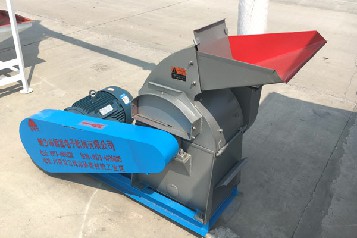
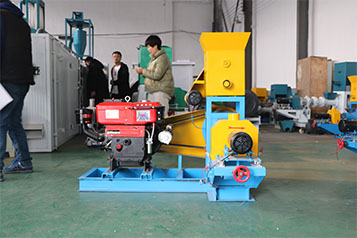
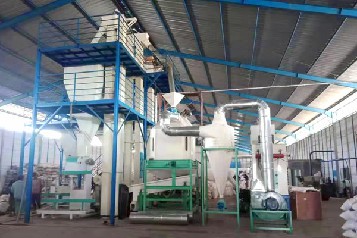
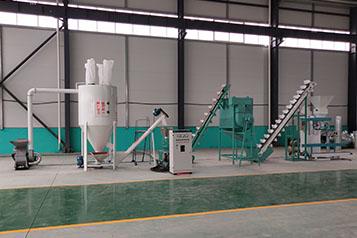
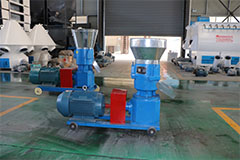


Leave your comment Here